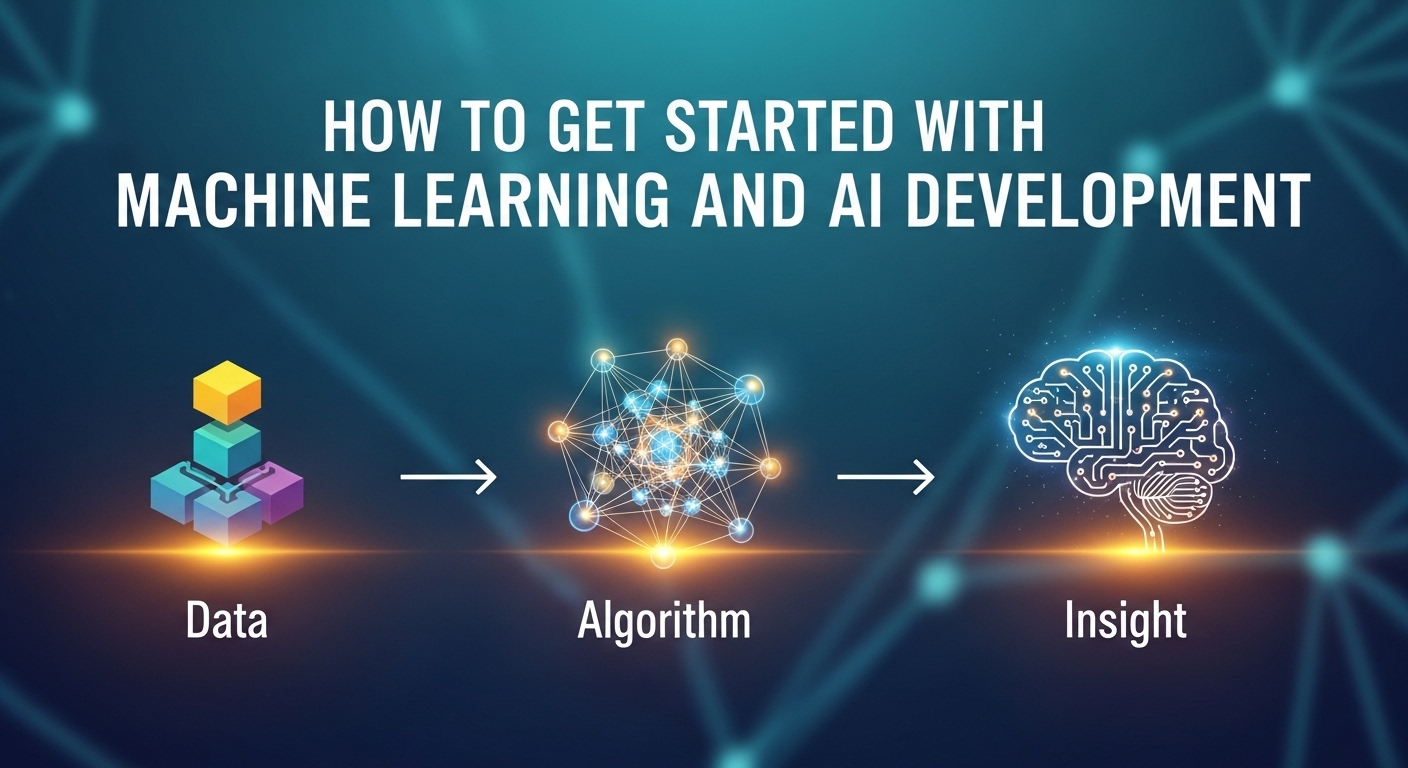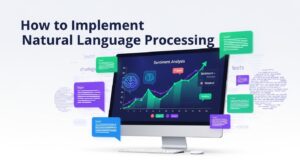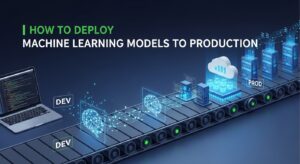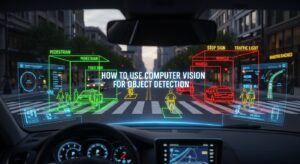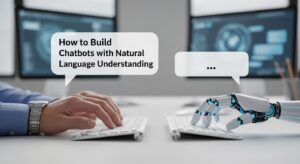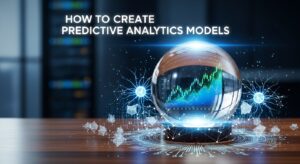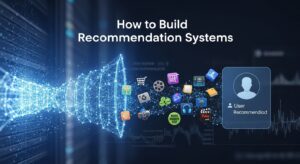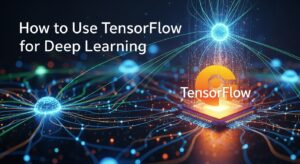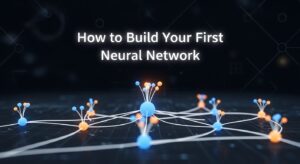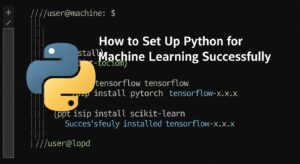Starting your journey in machine learning and AI development can feel overwhelming, but with the right roadmap, you can build a solid foundation and begin creating intelligent applications. This comprehensive guide will walk you through the essential steps to transform from a curious beginner into a capable AI developer.
Whether you’re a software developer looking to expand your skills or someone completely new to programming, understanding how to approach machine learning development systematically will accelerate your learning and help you avoid common pitfalls.
What Exactly Is Machine Learning and AI Development?
Before diving into the how-to, let’s establish what we mean by machine learning development. It’s the process of creating systems that can learn and improve from data without being explicitly programmed for every scenario. This involves understanding algorithms, working with data, and building models that can make predictions or decisions.
Think of it as teaching computers to recognize patterns the same way humans do, but at scale and with mathematical precision. The development aspect involves writing code, preprocessing data, training models, and deploying solutions that can solve real-world problems.
Step 1: Build Your Mathematical Foundation for Machine Learning Development
The first step in your machine learning development journey requires strengthening your mathematical toolkit. While you don’t need a PhD in mathematics, certain concepts are fundamental to understanding how algorithms work.
Essential Mathematical Concepts
- Linear Algebra forms the backbone of most machine learning algorithms. You’ll need to understand vectors, matrices, and basic operations. Start with Khan Academy’s linear algebra course or MIT’s OpenCourseWare for a solid foundation.
- Statistics and Probability help you understand data distributions, hypothesis testing, and model evaluation. Focus on descriptive statistics, probability distributions, and Bayesian thinking. The book “Think Stats” by Allen Downey provides an excellent practical introduction.
- Calculus, particularly derivatives and gradients, becomes crucial when you start working with neural networks and optimization algorithms. Understanding how gradient descent works will make you a more effective developer.
Recommended Learning Resources
Resource | Focus Area | Time Investment |
Khan Academy | Linear Algebra Basics | 2-3 weeks |
StatQuest YouTube | Statistics Concepts | 1-2 weeks |
3Blue1Brown | Calculus Intuition | 1-2 weeks |
MIT OpenCourseWare | Advanced Topics | Ongoing |
Don’t try to master everything before moving forward. Build a basic understanding and return to strengthen specific areas as needed.
Step 2: Choose Your Programming Language and Environment
Machine learning development requires selecting the right tools for your goals. Python dominates the field due to its extensive library ecosystem and readable syntax, making it ideal for beginners and experts alike.
Why Python for Machine Learning Development?
Python offers unmatched library support through scikit-learn, TensorFlow, PyTorch, and pandas. The syntax is beginner-friendly, yet powerful enough for production systems. Major tech companies use Python for their ML infrastructure, making it a practical career choice.
R serves as an alternative, particularly strong in statistical analysis and data visualization. However, Python’s broader ecosystem makes it more versatile for end-to-end machine learning development projects.
Setting Up Your Development Environment
Install Anaconda distribution, which includes Python, Jupyter notebooks, and essential libraries pre-configured. This eliminates dependency conflicts and provides a consistent environment across different systems.
Essential libraries to install:
- NumPy for numerical computations
- Pandas for data manipulation
- Matplotlib/Seaborn for visualization
- Scikit-learn for traditional ML algorithms
- Jupyter for interactive development
Consider using Google Colab for cloud-based development if you prefer not installing software locally. It provides free GPU access and comes pre-loaded with ML libraries.
Step 3: Master Data Manipulation and Preprocessing
Data preprocessing consumes 70-80% of time in real machine learning development projects. Learning to clean, transform, and prepare data effectively will dramatically impact your success.
Understanding Your Data
Start every project by exploring your dataset thoroughly. Use pandas to load data and examine its structure, missing values, and basic statistics. This exploration phase reveals data quality issues and informs your preprocessing strategy.
Create visualizations to understand distributions, correlations, and outliers. Matplotlib and seaborn make this process straightforward, helping you identify patterns that might not be obvious from summary statistics alone.
Essential Preprocessing Techniques
- Handling Missing Data requires deciding whether to remove incomplete records, impute missing values, or use algorithms that handle missing data naturally. The choice depends on your data size, missing data patterns, and business requirements.
- Feature Engineering involves creating new variables from existing ones to improve model performance. This might include combining features, creating interaction terms, or extracting components from complex data like dates or text.
- Data Scaling ensures features contribute equally to model training. Standardization and normalization prevent features with larger scales from dominating the learning process.
Practical Data Preprocessing Workflow
Step | Purpose | Common Tools |
Data Loading | Import from various sources | pandas, SQLAlchemy |
Exploration | Understand data structure | pandas.describe(), matplotlib |
Cleaning | Handle missing/invalid data | pandas.fillna(), dropna() |
Feature Engineering | Create meaningful variables | Custom functions, feature-engine |
Scaling | Normalize feature ranges | StandardScaler, MinMaxScaler |
Step 4: Learn Core Machine Learning Algorithms
Understanding fundamental algorithms forms the heart of machine learning development. Start with supervised learning algorithms since they’re most commonly used in industry applications.
Supervised Learning Algorithms
- Linear Regression provides the foundation for understanding how machines learn from data. It’s simple yet powerful for predicting continuous values and understanding feature relationships.
- Logistic Regression extends linear concepts to classification problems. Despite its name, it’s a classification algorithm that estimates probabilities of different outcomes.
- Decision Trees offer intuitive, interpretable models that work well with both numerical and categorical data. They form the basis for more advanced ensemble methods.
- Random Forest combines multiple decision trees to improve prediction accuracy and reduce overfitting. It’s often a go-to algorithm for many machine learning development projects due to its robustness and good default performance.
Unsupervised Learning Fundamentals
- K-Means Clustering helps discover hidden patterns in data by grouping similar observations. It’s useful for customer segmentation, data exploration, and dimensionality reduction.
- Principal Component Analysis (PCA) reduces data dimensionality while preserving important information. This technique is crucial for visualization and computational efficiency.
Learning Strategy for Algorithms
Focus on understanding one algorithm deeply before moving to the next. Implement each algorithm from scratch using NumPy to understand the underlying mechanics, then use scikit-learn for practical applications.
Practice on different datasets to see how algorithms behave with various data types and sizes. Use UCI Machine Learning Repository and Kaggle Datasets for diverse practice opportunities.
Step 5: Build and Deploy Your First Machine Learning Project
Completing end-to-end projects transforms theoretical knowledge into practical machine learning development skills. Start with a simple project that interests you personally, as motivation helps overcome inevitable challenges.
Project Selection Guidelines
Choose datasets with clear objectives and reasonable complexity. Avoid extremely large datasets initially, as they can slow your learning process. Focus on problems where you can easily evaluate success.
Consider these beginner-friendly project ideas:
- Predicting house prices using real estate data
- Classifying movie reviews as positive or negative
- Recommending products based on user behavior
- Detecting spam emails using text features
Project Development Workflow
- Problem Definition clarifies what you’re trying to achieve and how success will be measured. This step often gets overlooked but significantly impacts project direction.
- Data Collection and Exploration involves gathering relevant data and understanding its characteristics. Use public datasets initially, then progress to collecting your own data as skills develop.
- Model Development includes preprocessing data, selecting algorithms, training models, and evaluating performance. Use cross-validation to get reliable performance estimates.
- Model Deployment makes your solution accessible to users. Start with simple solutions like saving models with pickle, then explore web frameworks like Flask or cloud platforms like AWS SageMaker.
Essential Project Components
Component | Purpose | Key Considerations |
Data Pipeline | Automate data processing | Reproducibility, scalability |
Model Training | Learn from data | Cross-validation, hyperparameter tuning |
Evaluation Metrics | Measure performance | Business relevance, statistical significance |
Documentation | Explain methodology | Code comments, README files |
Version Control | Track changes | Git, experiment logging |
Advanced Learning Paths in Machine Learning Development
Once you’ve mastered the fundamentals, machine learning development offers numerous specialization paths. Deep learning opens doors to computer vision and natural language processing. MLOps focuses on deploying and maintaining ML systems at scale.
Consider your interests and career goals when choosing specializations. Computer vision excels in image and video analysis, while NLP handles text and language processing. MLOps becomes crucial for production systems and enterprise applications.
Essential Tools and Resources for Continued Learning
The machine learning development ecosystem evolves rapidly, making continuous learning essential. Follow reputable sources like Towards Data Science on Medium and Papers with Code for latest research implementations.
Join communities like Kaggle for competitions and GitHub for open-source projects. These platforms provide opportunities to learn from experienced practitioners and contribute to real projects.
Consider structured learning through courses like Andrew Ng’s Machine Learning Course on Coursera or Fast.ai’s Practical Deep Learning for Coders. These resources provide structured learning paths and hands-on experience.

